Reading a Record Collector 1
I haunt the resale shops looking for “records that look like books.” I’m referring to the folios of LPs that were common (a) when prepackaged by the label, as a way to sell extended plays and collections when records didn’t hold too many songs and (b) when sold blank, as a way for an individual collector to store and carry multiple, individually-purchased discs.
When I find a collection stored in the sleeves of such a folio, I snatch it, wondering who collected these masterpieces.
Gabriel’s Books, one of the best-kept secrets in Duluth, is in a period where many, many collections and libraries are appearing. I’ve snagged some great locally published poetry books by Calyx Press, by Lake Superior Writers, and by Holy Cow! I’ve snagged some magnificent books by Elaine Pagels and Thomas Merton for my theology section. I snagged the complete Carl Sandburg poems and a nonfiction book or two by Sandburg.
And I snagged some record collections. In this selection, we have a straightforward look at an era in popular music that burbles with a kind of diversity I admire at the same time that it chokes, just a bit, under a small kind of patriarchy.
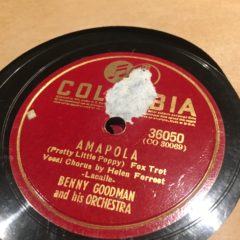
“Amapola” is, according to Wikipedia, “a 1920 song by Spanish American composer José María Lacalle García (later Joseph Lacalle).” Like most of these big-band era classics, it’s been performed and recorded many, many times — by Orquesta Francesa de A. Moreno in 1923, by Spanish tenor Miguel Fleta in 1925, by the Lecuona Cuban Boys in 1935, by Japanese singer Noriko Awaya in 1937, by the Jimmy Dorsey Orchestra in 1941, and by Spike Jones and his City Slickers.
Outside the big band scene, Wikipedia tells me that opera tenors (including Tito Schipa (1926), Nino Martini (1941), Jan Peerce (1950), Alfredo Kraus (1959) and Luigi Alva (1963), Tatsuro Yamashita (1986), and the Three Tenors concert in 1990.
Immediately, I hear this song and I think that it’s “just a pop tune” and yet, its performance history reveals so much more. What song can be interpreted by Spike Jones and by the Three Tenors, as well as Benny Goodman?
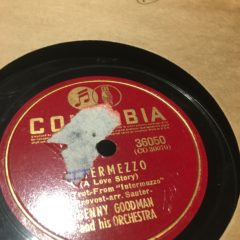
Next we find Benny Goodman again, the B-Side to “Amapola.” (Do I need to explain a “B-Side” to readers of this blog? I hope not.)
It’s a Goodman performance of a tune from Intermezzo (also called Intermezzo: A Love Story), “a 1939 American romantic film remake of a 1936 Swedish film of the same title. It stars Leslie Howard as a married virtuoso violinist who falls in love with his accompanist, played by Ingrid Bergman in her Hollywood debut” (Wikipedia).
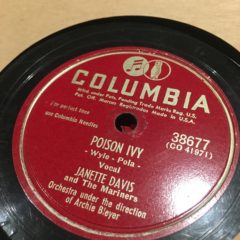
“Poison Ivy” is composed by Edward Pola (Sidney Edward Pollacsek, doing as so many immigrants did at the time and losing the Hungarian Jewish mark of their name) and by George Wyle (born Bernard Weissman). As someone who grew up in a world of Ronkowskis, Budziszs, Wrobleskis, Zagorskis, I remember the choice some people made, in a time before I was born, to retain their name and so their obvious ethnic identity, or to lose it in a new, more “American” name.
Between Cuban bandleaders, Swedish movies and Hungarian Jewish composers, thumbing through this collection reminds me of a kind of diversity in what appeared to be a monoculture of the past.
The singer, Janette Davis was a minor pop star, noted in part for recording “I Didn’t Know the Gun was Loaded.” I can’t find a video to link of Janette Davis playing this song, but I can find audio of both Gene Autry, the Singing Cowboy, playing “Poison Ivy” here and of Davis playing it here.
Wyle and Pola are most famous, perhaps, as a team, for composing a holiday classic.
But Wyle, by himself, has a claim to fame that resonates in my childhood, too:
When I was a kid, Gilligan’s Island was as omnipresent a part of what I thought American culture could be. Nod to Mr. Wyle; I’m saddened that he had to hide who he was to speak, create, American culture as successfully as he did.
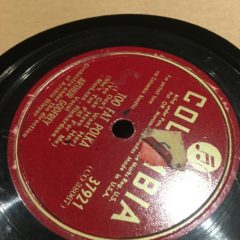
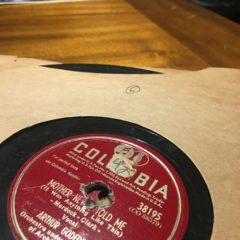
Okay, so I am not sure what to say about “Too Fat Polka,” played by Arthur Godfrey, or “Mother Never Told Me.”
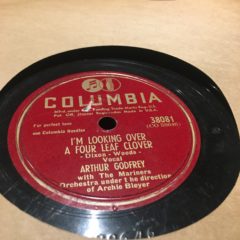
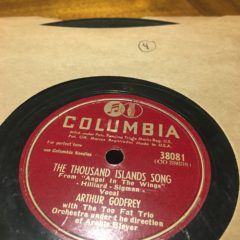
Arthur Godfrey was a national celebrity and a jerk. I read about him and I get Keillor vibes — someone who speaks well for and to a demographic, but fundamentally isn’t part of that demographic. Someone who uses his ability to speak for that demographic to appear to be someone he’s not.
I don’t need to read or listen to more.
Below, find a recording of one of Godfrey’s more insensitive songs and, afterward, Bugs Bunny singing a variation on a song Godfrey performed.
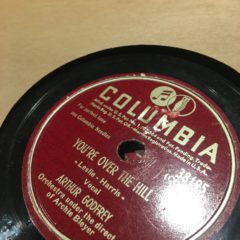
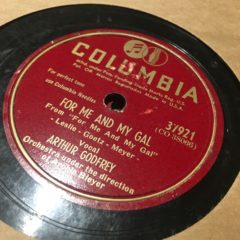
Can I keep this Bugs tune while discarding Godfrey to the dustbin of history?
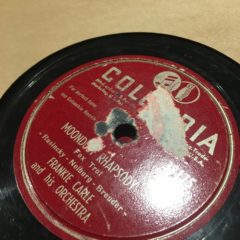
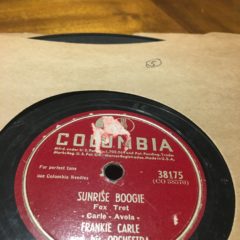
This piece, “Moondust Rhapsody,” can be found here. This is the second time I’ve posted about Frankie Carle on PDD; it’s good stuff, and I wish I could do more to draw attention to this.
Both of these songs, the “Moondust Rhapsody” and the “Sunrise Boogie,” are “fox trots.” Since I can’t find a video of Carle performing either song, here is a video about the fox trot.
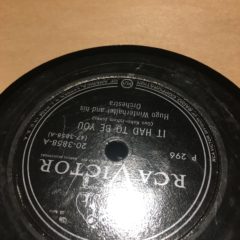
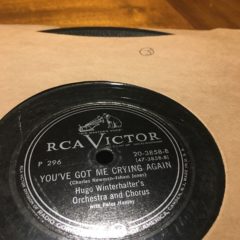
Hugo Winterhalter exemplifies a career musician to me — he worked for movies and for easy listening/pop music. I can’t find much else about the man or the music.
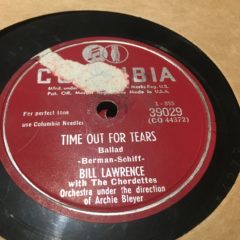
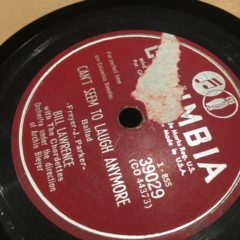
The Chordettes, the vocal quartet from Sheboygan, Wis., that recorded with Bill Lawrence here, was “discovered” on Arthur Godfrey’s radio program Talent Scouts.
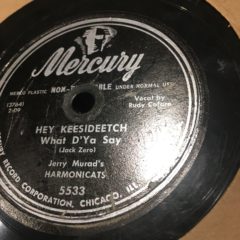
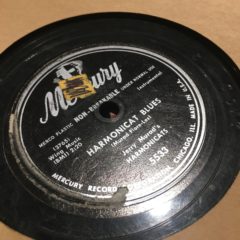
According to Wikipedia, “Jerry Murad’s Harmonicats were an American harmonica-based group.” “Hey Keesideteetch” (kind of slang Italian for “what did you say,” I think) was issued to juke box operators with a money-back guarantee. I don’t know how popular harmonica groups ever were, but the Harmonicats got some press.
The Harmonicats played for more than fifty years, with a significantly changing lineup over time.
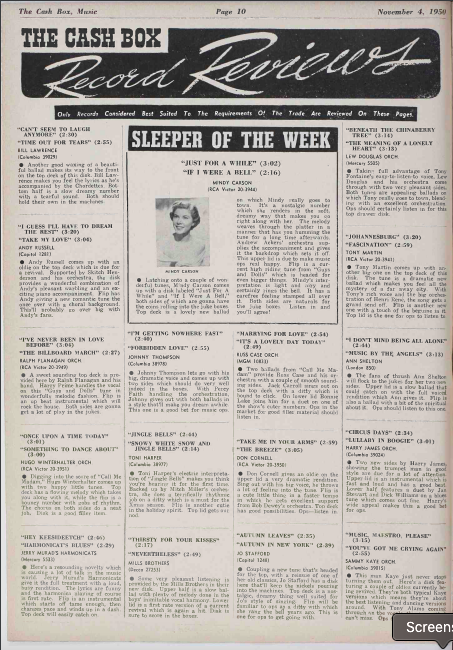
The “Harmonicat’s Blues” can be heard here. “Hey Keesideetch” can be heard in the YouTube video below.
This set of records wasn’t quite the set of gems I’ve found in the past (nothing as cool as Yogi Yorgesson), but it was a reminder of a couple of things I appreciate remembering: the diverse undercurrents in popular music within the first decades of the 20th century, the sad necessity to hide that diversity among its creators, the cruelty of some of the men who dominated the radio and TV, and finally, how much the theme to Gilligan’s Island rocked.
Recommended Links:
Leave a Comment
Only registered members can post a comment , Login / Register Here


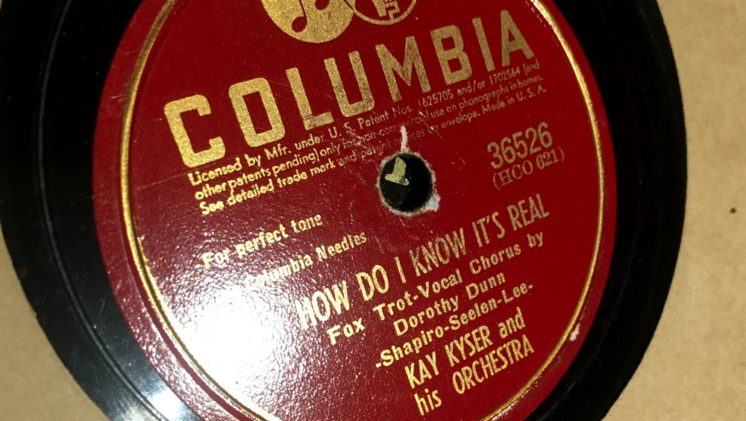
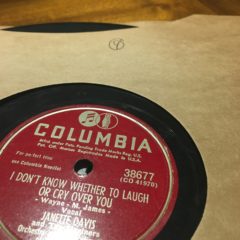












No Comments